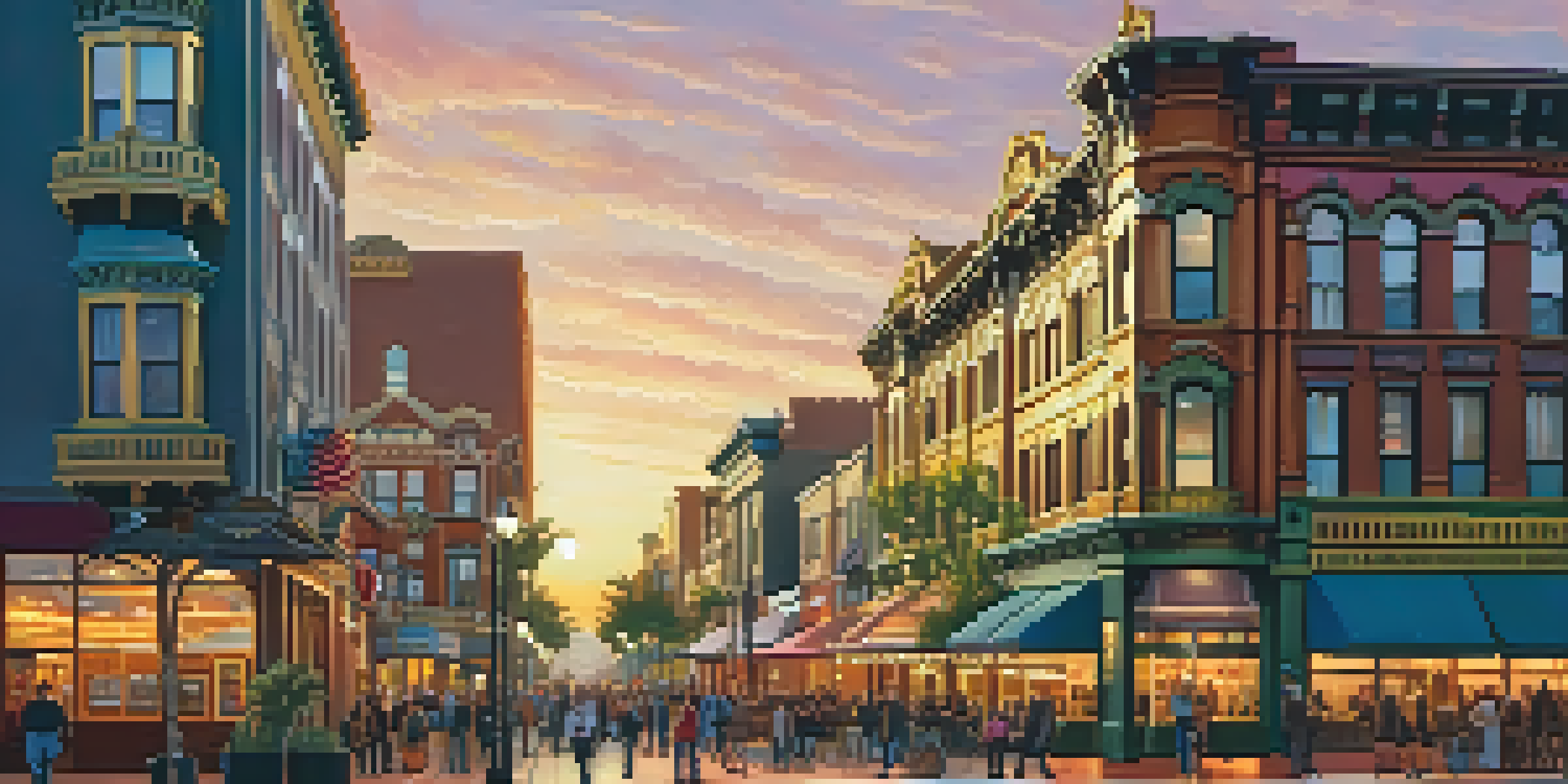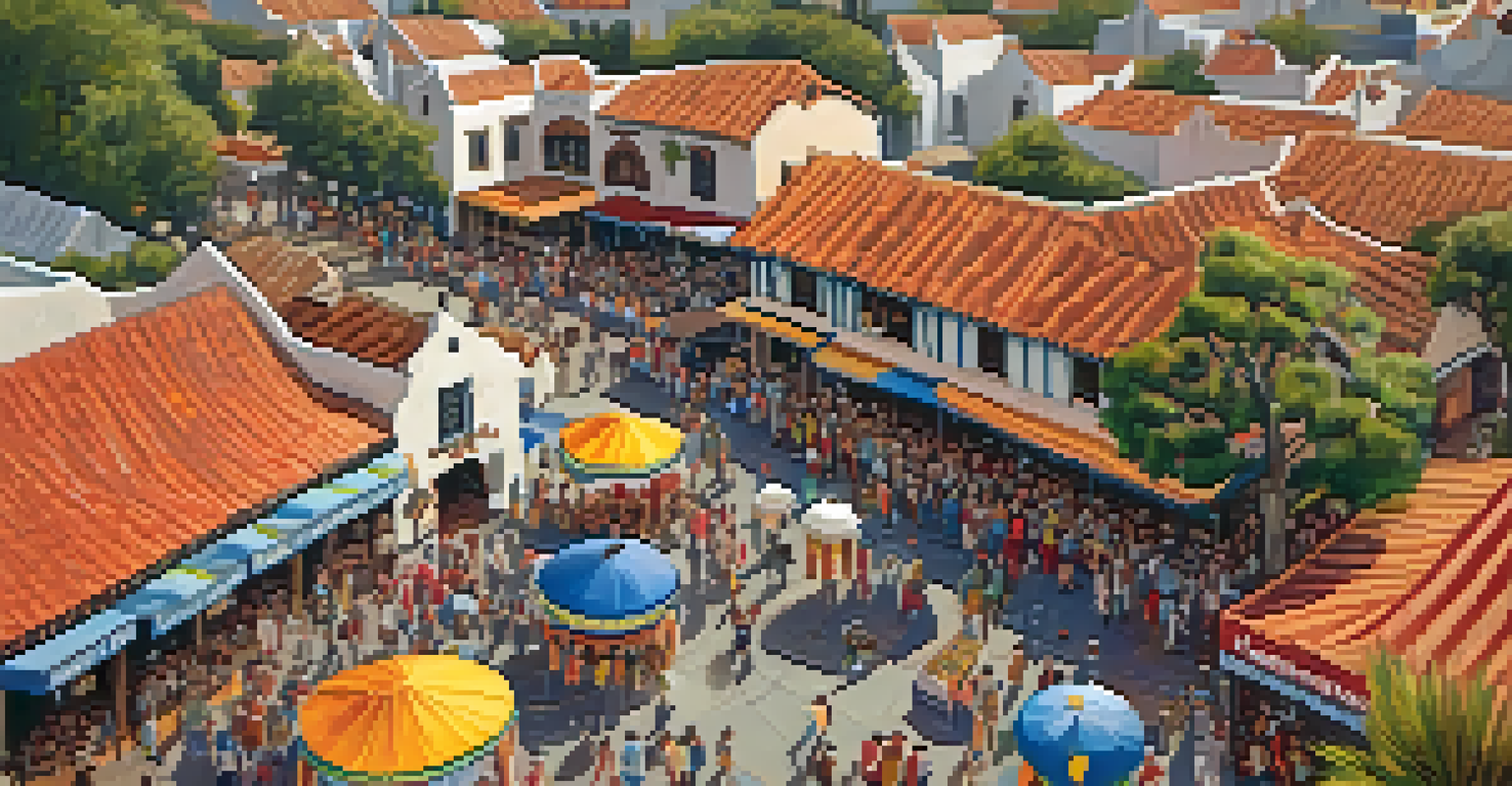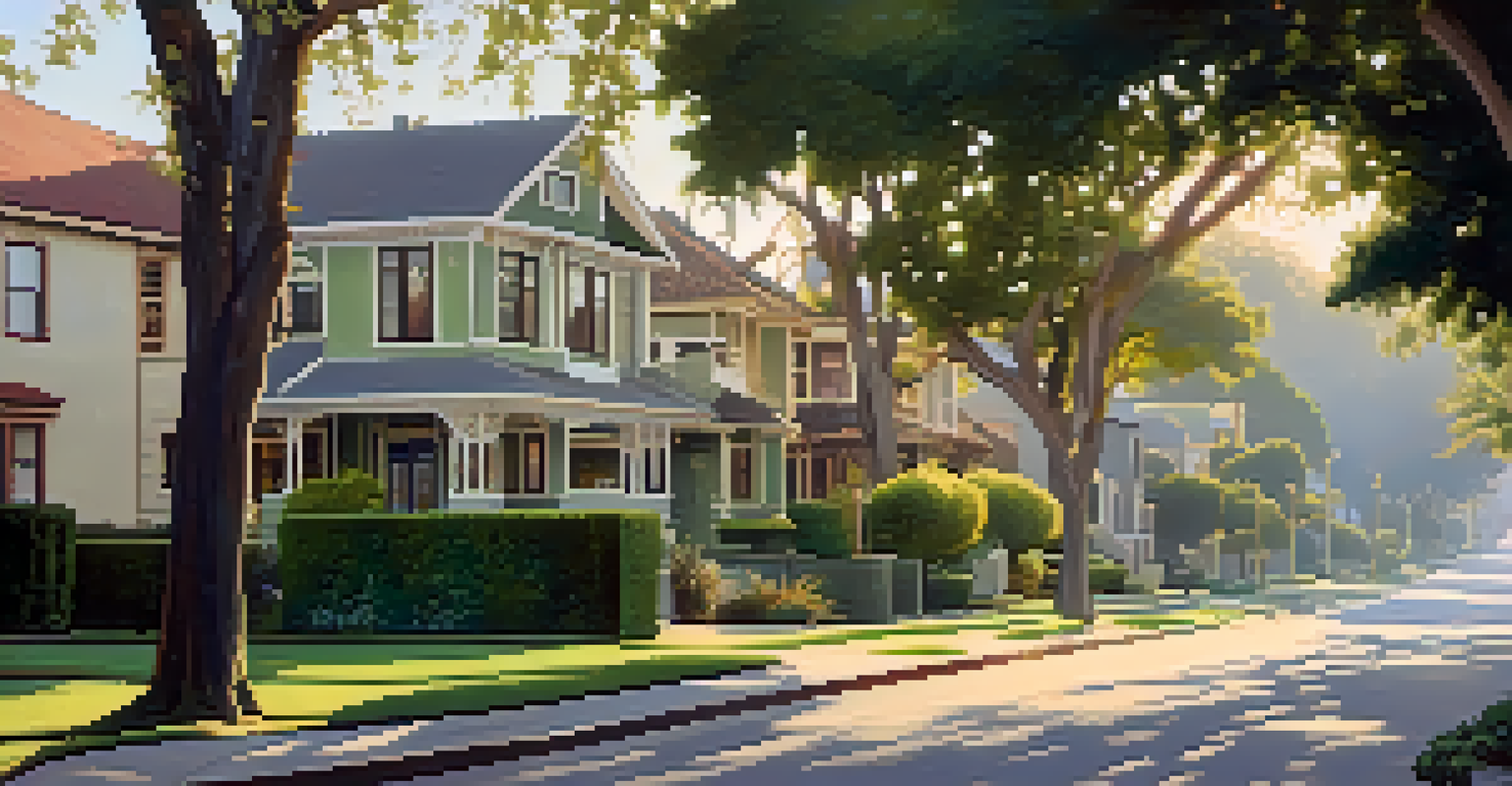San Diego's Historic Districts: An Overview of Their Importance

Understanding the Charm of San Diego’s Historic Districts
San Diego is home to a multitude of historic districts, each brimming with unique charm and character. These areas serve as a window into the city's past, showcasing the architectural styles and cultural influences that have shaped San Diego over the years. From the Spanish colonial revival to Victorian-era homes, these districts tell compelling stories that reflect the city’s diverse heritage.
To be rooted is perhaps the most important and least recognized need of the human soul.
Walking through these historic districts, one can almost hear the echoes of the past—children playing in the streets, merchants hawking their wares, and families gathering for celebrations. Each building, with its own story, contributes to the vibrant tapestry of San Diego’s history. This architectural charm is not only visually appealing but also serves as a reminder of the city’s evolution.
Moreover, the preservation of these districts is vital for maintaining a sense of identity and community. They offer a tangible connection to the past that can inspire current and future generations, fostering a deeper appreciation for San Diego's rich cultural heritage.
Key Historic Districts: A Closer Look
Among the most notable historic districts in San Diego is the Gaslamp Quarter, famous for its Victorian buildings and lively nightlife. This area has transformed from its origins as a rough-and-tumble district in the 19th century to a bustling hub filled with restaurants, shops, and entertainment venues. The Gaslamp Quarter exemplifies how historic preservation can coexist with modern development.

Another significant area is Old Town San Diego, recognized as the birthplace of California. Here, visitors can explore the historic adobe buildings, museums, and vibrant markets that recreate the early days of the state. This district not only highlights San Diego’s history but also serves as a cultural center where traditions are celebrated.
Historic districts enrich San Diego
San Diego's historic districts showcase diverse architectural styles and cultural influences that reflect the city's rich heritage.
Lastly, the Mission Hills district offers a glimpse into the early 20th-century affluent lifestyle, with stunning architecture and picturesque views. These historic districts, each with their own unique flair, contribute to the diverse narrative of San Diego, making them essential to the city’s cultural landscape.
Preservation Efforts and Their Impact
Preserving historic districts is crucial for maintaining the integrity of San Diego's cultural heritage. Various organizations and community groups work diligently to protect these areas from modern encroachments and developments that could compromise their historical significance. The efforts include restoring buildings, enforcing preservation laws, and raising public awareness about the importance of these sites.
History is not a burden on the memory but an illumination of the soul.
The impact of these preservation efforts extends beyond aesthetics; it also supports local economies. Tourists are often drawn to historic districts, contributing to the growth of businesses and creating jobs in the hospitality and retail sectors. This economic boost further underscores the value of maintaining these historical sites.
Additionally, preservation fosters a sense of pride among residents. When communities come together to protect their history, it strengthens bonds and encourages active participation in local events. This engagement not only enhances community spirit but also ensures that the stories of the past continue to resonate with future generations.
Cultural Significance of Historic Districts
Historic districts in San Diego are more than just collections of old buildings; they are vital cultural touchstones that reflect the city’s diverse community. Each district encapsulates different aspects of the city’s history, from its Indigenous roots to the arrival of settlers and immigrants. This rich tapestry of cultural influences enriches the social fabric of San Diego.
Events and festivals held in these historic areas celebrate this diversity, bringing together residents and visitors alike. For instance, the annual Old Town Fiesta celebrates the Mexican heritage of the area, while the Gaslamp Quarter hosts a variety of cultural events throughout the year. These gatherings reinforce the importance of community and shared history.
Preservation boosts local economies
Efforts to preserve historic districts not only maintain cultural integrity but also enhance the local economy through tourism and business growth.
Moreover, the stories behind the buildings and the people who lived there contribute to a greater understanding of the city’s identity. By exploring these districts, individuals can gain insight into the values, struggles, and triumphs of those who came before them, fostering a deeper connection to the place they call home.
Tourism and Historic Districts: A Symbiotic Relationship
Tourism plays a pivotal role in the vitality of San Diego's historic districts. Visitors are often eager to explore the rich history and architectural beauty these areas offer, leading to increased foot traffic and engagement with local businesses. This influx of tourists not only helps sustain the local economy but also raises awareness of the significance of preserving these districts.
Guided tours, walking paths, and informational signage enhance the visitor experience, providing context and depth to their exploration. Tourists can learn about the historical significance of each site, making their visit more meaningful. This educational aspect is crucial in fostering appreciation for the city’s heritage.
Moreover, as tourists share their experiences, they become ambassadors for San Diego’s history, encouraging others to visit and explore. This word-of-mouth promotion is invaluable, ensuring that the charm of San Diego's historic districts continues to attract new generations of visitors.
Challenges Facing Historic Districts Today
Despite their charm and significance, San Diego's historic districts face several challenges. Urban development pressures often threaten the integrity of these areas, as new construction can overshadow or even demolish historic buildings. Balancing growth with preservation is a constant struggle for city planners and community advocates alike.
Additionally, funding for preservation efforts can be limited. Many organizations rely on grants, donations, and government support, which can fluctuate year to year. This uncertainty can hinder long-term preservation initiatives, making it essential for communities to rally together and advocate for their historic districts.
Community engagement is essential
Active community participation in preservation efforts fosters pride and ensures the stories of San Diego's history continue to resonate with future generations.
Finally, public awareness plays a vital role in preservation efforts. Many residents and visitors may not fully grasp the importance of these districts, leading to apathy towards their protection. Education and outreach are crucial in cultivating a sense of responsibility and pride in preserving San Diego's rich history.
The Future of San Diego’s Historic Districts
Looking ahead, the future of San Diego's historic districts hinges on a collaborative approach between community members, local government, and preservation organizations. By fostering partnerships and open dialogue, stakeholders can develop plans that respect the historical significance of these areas while accommodating growth and change.
Technological advancements also present new opportunities for preservation. Digital archiving, virtual reality tours, and other innovations can enhance public engagement and education, allowing a wider audience to appreciate the history of these districts. Embracing technology can help ensure that the stories of the past remain relevant in a rapidly changing world.

Ultimately, the success of San Diego's historic districts will depend on the collective commitment to preserving their unique character and heritage. With continued advocacy, education, and community involvement, these treasures can thrive for generations to come, ensuring that the city’s rich history remains an integral part of its identity.